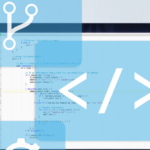An intrusion prevention system (IPS) acts as a security mechanism to detect and prevent network threats. The system accomplishes this by scanning network traffic for identified dangers. When the system detects a threat in the intrusion data, it stalls development and bars the threat from entry.
Three criteria broadly categorize elements as threats. First, threats can be signature-based. In this case, vendors feed the IPS with information and patterns of well-known cyber threats. Upon recognizing such a pattern, the IPS swings into action. Second, threats can be anomaly-based. The IPS considers any unrecognizable element as a threat. Third, threats can be policy-based. Most organizations have security policies and configure their IPS to block any activity violating these policies.
The importance of cybersecurity can’t be overemphasized. A data breach can damage a company’s reputation and, by extension, impact its finances.
Setting up an IPS is only the first step in preventing breaches. Cybercriminals are creative, and they work long hours in the comfort of their homes to devise threats to bypass some of the most rigorous defense systems. Patching helps prevent these newly-developed attacks.
Let’s explore what IPS patching is, its importance, and the role machine learning plays in protecting your systems.
Implementing IPS Patching
As its name implies, patching mends or covers known vulnerabilities in the intrusion prevention system. Computer users are familiar with patch requests by network providers. Those “annoying” software updates that appear on-screen periodically are warnings that the software has detected a newly-created threat. After the user consents to the fix, the system updates to prevent cybercriminals from exploiting the vulnerability.
When an organization takes too long to patch vulnerabilities, hackers can exploit them. However, IPS patching is sometimes challenging to implement. Patching can be disruptive to the business flow and costly, discouraging organizations from taking prompt action. Some organizations invest in virtual patching instead.
Choosing Virtual Patching
Virtual patching is a multilayered security system used to prevent cybercriminals from exploiting both known and unknown vulnerabilities. The virtual patch intercepts threats in transit and bars them from ever getting to the web application. The virtual patch functions even when the application’s actual source code is unmodified. It also prevents the exploit from reaching the web application, so virtual patching is an external patch. Virtual patching is often considered a web application firewall, but it also functions on other kinds of software infrastructure.
This virtual patching operates on a network level and not on the device itself. This way, a virtual patch can modify the network path to thwart an exploit’s progress. Due to its multilayered form, an excellent virtual patch can deeply inspect network traffic for malicious packets. It also prevents traffic from moving anywhere close to the vulnerability.
It’s well-known that an organization’s best security measure is to fix the vulnerabilities in the source code. But such fixes pose challenges to individual users and companies alike. Should someone identify a software vulnerability, an average user can’t immediately patch the source code. They have to wait for an extended period — usually months — until the software vendor releases an official patch.
Installation processes are time-consuming for organizations due to the extensive testing required. Fixing an application’s source code can be costly, especially after its completion. Virtual patching has proven to be a solid alternative because it’s quicker and more flexible. It adds layers of security to a company’s IT infrastructure, sustains the business flow, and works comfortably in physical and cloud environments.
Protecting Against Zero-Day Threats
Without virtual patching, organizations also leave themselves vulnerable to zero-day threats: vulnerabilities that are disclosed but not yet patched. Cybercriminals develop zero-day exploits to access vulnerabilities that are not widely known.
Zero-day attacks pose a severe threat to user data because it takes much more time for organizations to develop and test patches than for criminals to design exploits. Even when the vendor has created the patch, most users don’t adopt it promptly.
Remediation by fixing the source code or other traditional IPS methods only widens the window of vulnerability and may even be ineffective. Regular patch management depends heavily on closing off the vulnerability. But this isn’t possible, as patches aren’t readily available to mitigate the threat of zero-day malware. A signature-based detection system is also ineffective because the vendors haven’t had enough time to study the zero-day malware pattern.
Virtual IPS patching helps organizations respond to zero-day threats quickly.
Elements of IPS Patching
Let’s explore the two most important elements of IPS patching: network and endpoint security.
Network
A network intrusion prevention system operates on a network level to monitor network traffic for suspicious activity, analyzes inbound and outbound data, and protects the network interface from attack. A virtual patch falls under this category.
The IPS can shield its package from threat by modifying its network path or preventing access from specified IP addresses. An organization can patch its network by maintaining a list of devices not authorized to access its network.
Endpoint Security
Organizations can also deploy an IPS to monitor a computer system’s integrity. It can detect if programs are running according to their design and inspect each program’s resources. If a program accesses a resource outside its specifications, then it may be corrupted.
The IPS can determine if intruders have attempted to breach the computer’s security wall, then avert the attack through this detection.
Machine Learning’s Importance to IPS
Machine learning (ML) and artificial intelligence play an essential role in modern cybersecurity. IPS is primarily hands-off, thanks in part to ML.
An IPS flags suspicious activity through various detection techniques. Through ML, an IPS can memorize regular network activity and detect abnormal behavior by implication. If a user has already clicked on a malicious link, the system sends an alert. However, this sometimes results in the IPS finding false positives. Machine learning can help sort the false positives from the true threats in real time.
For example, Trend Micro’s TippingPoint Threat Protection System uses statistical models developed with machine learning techniques for real-time threat detection and mitigation.
Communicating with Software Vendors
Apart from giving the go-ahead to patch requests, users or organizations must keep in touch with their software vendors. In some cases, vendors go out of business, leaving their software unsupported. When this happens, users no longer receive updates, and any vulnerability that surfaces after that is left unattended.
Once a user knows that their vendors are no longer in control of the software, it’s advisable to stop using it because it’s vulnerable to exploits. Failing that, organizations can employ an IPS to help protect their systems even when an official patch does not exist.
Summary
Data breaches can be financially damaging. With cybercriminals’ rate and sophistication of attacks, the importance of having an IPS cannot be overstated.
IPS virtual patching serves as the first line of defense that protects networks from identified threats. It prevents malware from exploiting vulnerabilities while also enabling organizations to maintain their patching cycles.
Trend Micro’s TippingPoint Threat Protection System gives your organization visibility with the context needed to prioritize threats. Its deep network inspection detects threats that traditional security solutions won’t find.
Visit Trend Micro to learn how TippingPoint can help protect your network from security threats.
If you’re interested in developing expert technical content that performs, let’s have a conversation today.




